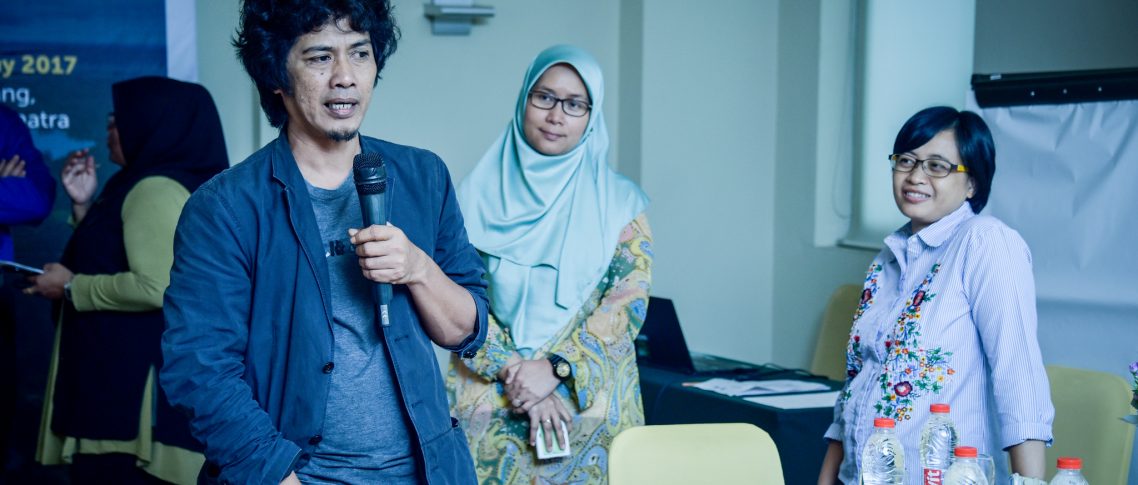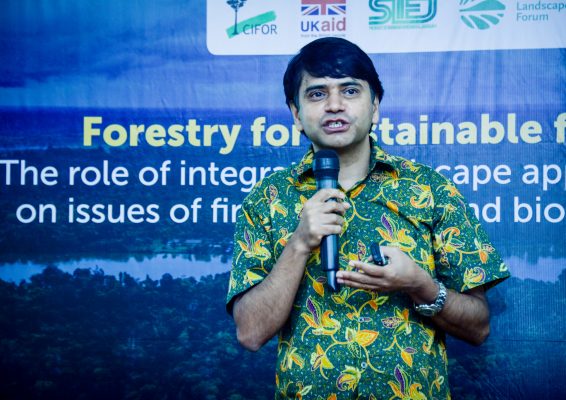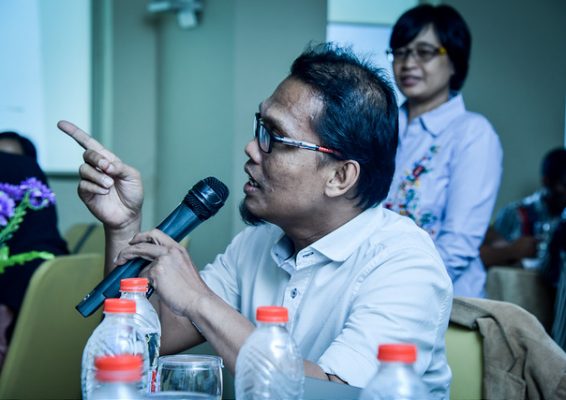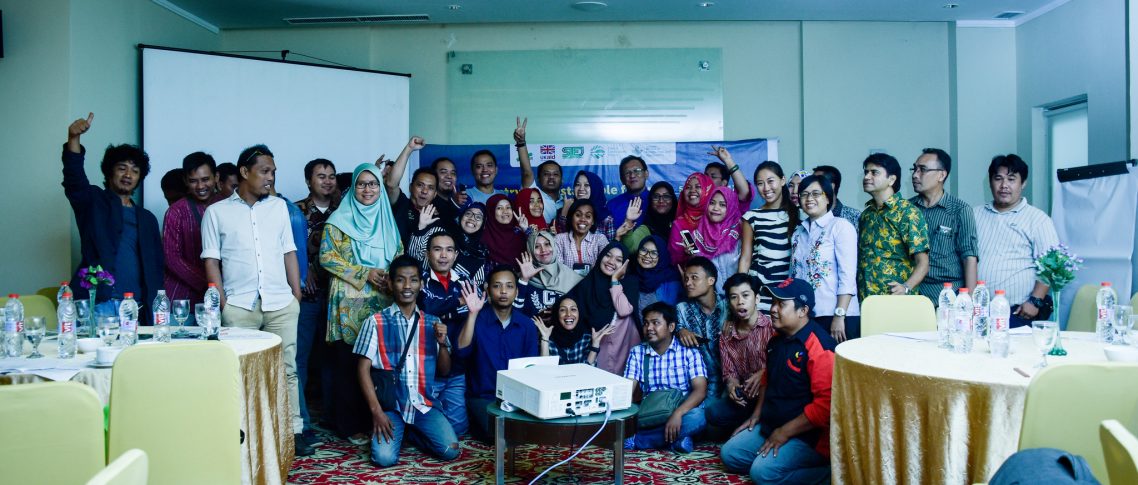SOUTH SUMATRA BURNING
The confusion among locals about how to effectively handle the peatlands they depend on significantly contributes to South Sumatra’s problems. The province is home to some of the largest areas of peat in Indonesia.
It has also experienced some of the country’s largest forest fires as these zones are converted into agricultural plantations to make products like palm oil. In the process, huge amounts of carbon have been released from the peat into the atmosphere. Rare plants and animals have been also been destroyed and the toxic air has caused long-term public health concerns.
Researchers are desperate to stem the tide and local people’s uncertainty by reaching them with important messages that can protect peatlands and their livelihoods. They also want to effectively communicate the personal struggles of people living on peatlands to policymakers.
JOINING FORCES WITH JOURNALISTS
Many believe the media could hold the key.
Television is the dominant source of news and entertainment in Indonesia. Radio and newspapers are also common, with radio in particular as an important way to reach people in remote rural areas. Online readership is growing, with recent studies suggesting a rapidly growing rate of Internet access and social media use across the country.
“To make scientific language popular, we need the media,” says Budhy Kristanty, Communications Coordinator for Indonesia at the Center for International Forestry Research (CIFOR). Kristanty recently organized a media training workshop, The role of integrated landscapes on issues of fires, peatland and bioenergy, for 40 Indonesian journalists in Palembang, South Sumatra.
“The media can become an agent of change that can encourage behavioral changes,” she says.
“We write and it’s understood by the common people, and understood by professors,” says Muhammad Arif Eko Wibowo, a journalist from MNC Media South Sumatra, who attended the workshop.
Journalists with Budhy Kristanty, Communications Coordinator for CIFOR's Indonesia program. Photo by: Icaro Cooke Vieira/CIFOR
WHEN SCIENCE MEETS MEDIA
With a team of four CIFOR scientists, Kristanty ran two days of training for 40 journalists – some with extensive knowledge of peatlands, some with little or none. As well as a field visit to an affected community, it included presentations by the scientists on peat and deforestation and introductions to their research projects on bioenergy and conservation in Indonesia.
“It’s really important to have science communicated to wider communities including the media,” says Himlal Baral, a senior scientist at CIFOR, who presented his research on using bioenergy crops to restore degraded lands in Kalimantan, Indonesia, during the training.
“As a scientist, we investigate answers to complex issues and we present them in scientific papers or journals, which are not much of interest to wider communities, especially local communities or policymakers,” he says. “Media can help turn them into a simpler form.”
Research has already shown some positive engagement by Indonesian media on related issues, such as the REDD+ project that aims to reduce emissions from deforestation and foster conservation.
Himlal Baral, Senior Scientist at CIFOR, gives a presentation to journalists at the CIFOR media training. Photo by: Icaro Cooke Vieira/CIFOR
A journalist asks the scientists questions about their research at the CIFOR media training. Photo by: Icaro Cooke Vieira/CIFOR
CIFOR scientists and participating journalist take a group photo at the CIFOR media workshop in Palembang, South Sumatra. Photo by: Icaro Cooke Vieira/CIFOR
However, overall, the media still has a ways to go.
“It turns out basic knowledge on peatlands, forests and the environment is generally lacking,” says Kristanty. “Some local journalists here don’t even know what peatlands are, or why peatland conservation is important.”
What’s more, getting media interested in covering stories with scientific angles can be difficult.
“In Indonesia, in my opinion, the general media is rarely interested in covering environmental news unless there’s a major event, which makes it important to cover, like forest fires, or floods and landslides,” says Kristanty.
After meeting and interviewing scientists directly during the sessions, journalists revealed their own analysis on the lack of scientific coverage in their media: A shortage of sources.
“We tend to have trouble finding researchers in the region who are concerned about discussing environmental issues,” says Tasma Sindo, a journalist with Koran Sindo newspaper in Palembang. “For instance, it’s hard for us to compare academics or the opinions of NGOs in the region; there tends to be a bias with news only coming from the government or other official stakeholders.”



